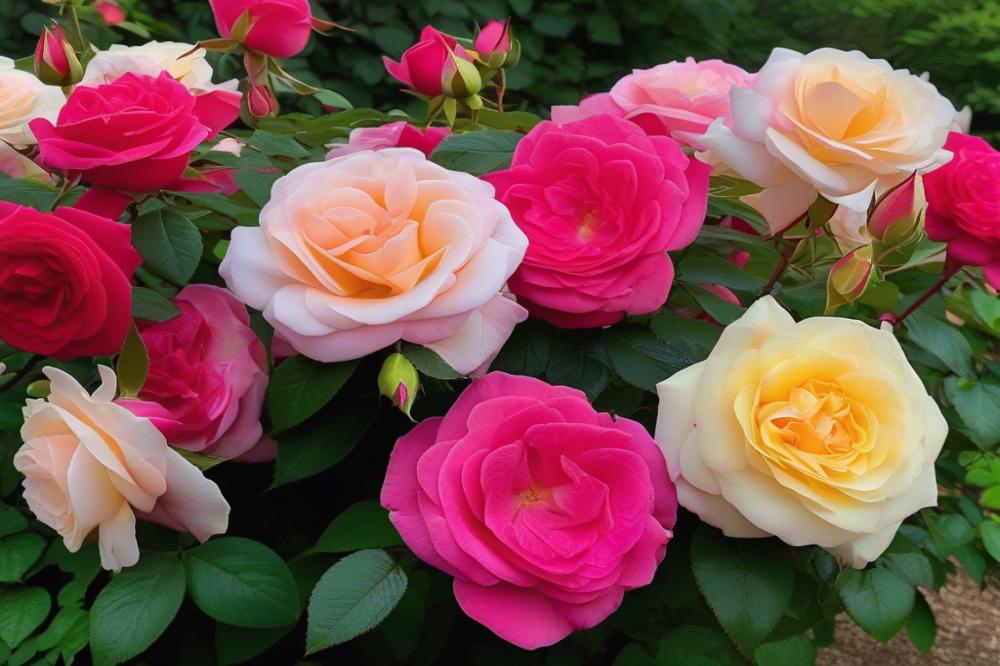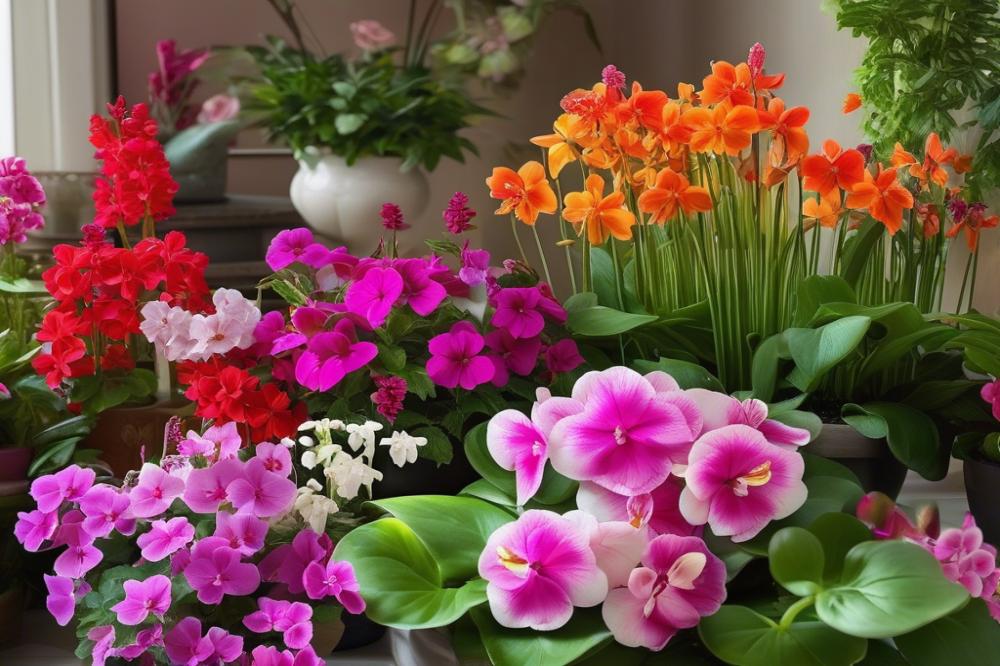Introduction
Mutabilis Roses stand out in gardens with their fascinating color variations. These beautiful flowers shift from yellow to pink and eventually to a deep crimson as they bloom. Their charm is undeniable, making them a favorite amongst gardening enthusiasts.
Proper care and cultivation play a significant role in maintaining the health and beauty of these roses. Without attention, plants can suffer from ailments like diseases and pests, diminishing their vibrancy. Understanding the basics of rose care will not only enhance their appearance but also extend their lifespan.
This article will guide you through essential aspects of growing and nurturing these roses. Topics will include sunlight requirements, soil quality, the importance of watering, and effective fertilization. Additionally, we will discuss the techniques of pruning, the benefits of mulching, and how to choose companion plants that coexist well. By the end, you will be equipped with knowledge to flourish as a caregiver for your flowering friends.
Understanding Mutabilis Roses

Description and characteristics
Mutabilis roses are often celebrated for their stunning blooms. Each flower changes color as it matures, starting as a soft yellow and transforming into rich pinks and deeper reds. This provides a captivating display throughout the growing season. Their bushy growth habit can reach heights of 4 to 6 feet, making them perfect for borders or focal points in your garden. With relatively few thorns, they offer an easier gardening experience. Their fragrant blooms attract bees and butterflies, promoting a vibrant ecosystem.
Climate and growing zones suitable for Mutabilis Roses
These roses thrive in warm climates. Sunset zones 8 through 11 are ideal, where winter temperatures rarely drop below 20 degrees Fahrenheit. In cooler areas, extra care is needed. Gardeners may want to add protective coverings during the cold months. Ample sunlight is essential for robust growth. Aim for at least six to eight hours of direct sunlight daily. Soil should be well-drained and rich in organic matter. Consider incorporating compost to enhance soil structure.
Historical background and significance
Historically, Mutabilis roses originated in China. They were first introduced to Europe in the late 19th century and have captivated enthusiasts ever since. Many gardeners cherish these roses for their beauty and resilience. Some legends suggest that they symbolize love and transformation. Due to their enduring qualities, they remain a popular choice among rose lovers. Additionally, planting companion plants, such as lavender or sage, can enhance their growth while keeping pests at bay. Regular pruning is vital to maintain their shape and encourage new blooms.
Watering must be consistent, especially during dry spells. Providing enough moisture will help prevent common diseases. Fertilization with a balanced rose food can foster vibrant blooms. Using mulch can help retain moisture and suppress weeds. Keeping an eye out for pests is crucial. Aphids and spider mites can sometimes pose threats. Early intervention prevents more extensive damage down the line. Overall, caring for these roses can bring immense joy and satisfaction to any gardener’s journey.
Planting Mutabilis Roses

Choosing the Right Location with Adequate Sunlight
Selecting a proper location is a critical first step. These roses thrive in full sun. Aim for at least six hours of direct sunlight each day. Less sunshine may hinder their growth and blooming. Observe your garden during different times of day. Make sure no tall trees or structures block the sun. Roses also benefit from good air circulation, which reduces the risk of diseases. Placing them too close to other plants can create problems. A bit of space can go a long way in helping them flourish.
Soil Preparation and Ideal Soil Conditions
Healthy soil leads to vibrant roses. Begin with well-draining soil. Mix in organic matter like compost to improve structure and nutrients. Aim for a pH level between 6.0 and 6.8. Conduct a soil test if unsure. Adjustments can be made easily. Poor soil may lead to weak plants susceptible to pests. Adding perlite or sand can also help drainage. Don’t forget to remove any weeds before planting. Healthy roots require space to grow and spread.
Planting Techniques and Tips for Success
When planting, dig a hole that’s about twice as wide as the root ball. This gives the roots room to expand. Place the plant in the hole, ensuring that the graft union is at soil level. Fill in with the prepared soil and water generously. Watering helps eliminate air pockets in the soil. Keep the area around the roses free of weeds. Mulching can help retain moisture and moderate temperature. Apply a layer of mulch about two to three inches deep. Companion plants can also support the growth of roses, as they help deter pests. Regular pruning is essential for a healthy plant. Always check for any signs of diseases or pest infestations. Quick action can help preserve the beauty of your garden.
Watering and Fertilization

Consistent watering is crucial for any rose. When it comes to Mutabilis Roses, they thrive on regular moisture. Without adequate water, plants can become stressed, leading to weakened growth. A well-watered rose will be more resilient against pests and diseases.
Best practices involve watering deeply rather than giving a little sprinkle every day. Settle into a routine of checking the soil moisture. Stick your finger into the soil; if it feels dry an inch down, it’s time to water. Early morning is often the best time to do this. Watering during the day can lead to evaporation, and nighttime watering may encourage fungal diseases.
When it comes to fertilization, a balanced routine makes all the difference. Utilize an all-purpose fertilizer during the growing season. Applying it every six to eight weeks can provide the essential nutrients your roses need to flourish. Organic options, such as compost or well-rotted manure, work wonders too. They enhance soil quality while supplying necessary nutrients.
Mulching after fertilization helps retain moisture and suppress weeds. This practice supports a healthier environment for the roots to grow. Companion plants can also play an essential role. They can attract beneficial insects that deter pests and promote a thriving ecosystem around your roses.
Pay attention to signs of nutrient deficiency, like discolored leaves or stunted growth. Addressing these issues promptly can prevent larger problems down the road. Pruning should also coincide with fertilization to encourage new growth. Every aspect of care works together for the utmost vigor of your garden.
Pruning Techniques

Pruning holds significant importance for the growth and health of roses. Through careful cutting, you can promote new blooms and keep your plant vigorous. It also reduces the risk of diseases and pests. A well-pruned rose bush will thrive in its environment, making it a must for every gardener.
When and How to Prune
Timing is vital for effective pruning. Begin in late winter or very early spring, just before new growth starts to appear. Examine the plant closely. Remove any dead, diseased, or damaged stems. Cut back the branches that grow inward, opening up the center to sunlight and airflow. This practice helps prevent diseases that could result from poor circulation.
Maintaining Shape and Promoting Blooms
Watch for its overall shape as you prune. Keeping a balanced structure will encourage fuller blooms. It’s beneficial to prune at an angle. This technique allows water to run off, preventing rot. Additionally, mulch around the base of the plant can help retain moisture in the soil. Fertilization is essential, too; feed your roses regularly to boost their strength.
Companion plants can also play a role. Some repulse pests, while others attract beneficial insects. These additions to your garden can aid your roses by creating a thriving ecosystem. Never forget the significance of water. Watering deeply, especially during dry spells, supports the health of your plant.
By following these techniques, gardening becomes a more enjoyable experience. With the right approach, a stunning display of roses can be achieved. Regular maintenance ensures your Mutabilis roses remain vibrant and healthy. Remember, your efforts today pave the way for blooming beauty tomorrow.
Mulching for Health
Mulching offers numerous benefits for your roses. It creates a protective barrier around the roots and soil. By covering the ground, you can help maintain the right balance of moisture. This is crucial for healthy growth. Weeds thrive in open soil, but they struggle to survive under mulch. Thus, applying a layer of mulch can significantly reduce weed competition.
Recommended Types of Mulch and Application Methods
Organic mulches are ideal for rose care. Bark chips, shredded leaves, and straw are excellent choices. These materials not only suppress weeds but also contribute nutrients back to the soil as they decompose. When applying mulch, aim for a layer about two to three inches thick. Spread it evenly around the base of the plants, keeping some space away from the stems. This prevents diseases that can occur when moisture accumulates near the plant base.
How Mulching Helps Retain Moisture and Suppress Weeds
Soil moisture retention is one of the most significant advantages of mulching. Hot weather can quickly dry out the soil. With a layer of mulch, evaporation slows down. This means your roses require less frequent watering, which is more convenient and sustainable. Additionally, maintaining proper moisture helps prevent stress on the plant. Stressed plants are more susceptible to pests and diseases, so mulching acts as a safeguard against these threats.
Moreover, healthy soil plays a critical role in growing roses. Mulch provides a range of benefits, from retaining moisture to suppressing unwelcome weeds. Companion plants can also benefit from mulch, as it keeps the garden looking tidy and organized. With the right care, including proper watering, sunlight exposure, and suitable fertilization, your roses can thrive beautifully.
Managing Diseases and Pests
Like any other plant, roses face various challenges from diseases and pests. Common diseases, such as black spot and powdery mildew, can diminish the beauty of your plants. Regular inspection is key to preventing these issues. Choosing the right location with plenty of sunlight helps promote healthy growth. Avoiding overcrowding allows for better air circulation, which discourages fungal infections.
Pruning dead or diseased branches also plays an important role. Removing these parts can limit the spread of problems. In addition, the soil in which you plant should be well-draining. Watering at the base of the plant instead of overhead reduces moisture on leaves. This simple adjustment can prevent many fungal diseases from taking hold.
Pests, including aphids and spider mites, can feast on your roses. Early identification is crucial. Look for discolored leaves or sticky residues on surfaces. If these pests are spotted, you can control them effectively. A strong blast of water can remove many of them without the need for chemicals. If the problem persists, consider introducing beneficial insects such as ladybugs.
Both organic and chemical options are available for managing pests and diseases. Organic methods include neem oil and insecticidal soap, which can be very effective without harming the environment. Chemical controls may also work for severe infestations but should be used cautiously. Always read labels and follow instructions carefully.
Companion plants can enhance your gardening efforts as well. Planting marigolds, for instance, helps repel certain pests naturally. Mulching aids in moisture retention and keeps weeds at bay. Regular fertilization ensures plants receive adequate nutrients, promoting strong, healthy roses. This holistic approach to gardening makes a significant difference in the long run.
Companion Plants for Mutabilis Roses
Companion planting offers many benefits. It creates a more balanced ecosystem in your garden. By pairing plants together, you can improve growth, increase yields, and even protect against diseases and pests. The idea is simple: some plants naturally help others thrive. This can be a gardener’s secret weapon in cultivating beautiful blooms.
Recommended Companion Plants
When planning your garden, consider adding friends for your roses. Lavender is an excellent choice. Its lovely scent not only attracts beneficial pollinators but also repels harmful insects. Additionally, marigolds are popular companions. These colorful flowers deter nematodes and various pests thanks to their natural properties. Some gardeners also appreciate the company of herbs like rosemary and basil. These plants not only enhance flavor in the kitchen but also work hard to boost the health of the roses.
Deter Pests Naturally
Companion plants can provide an effective shield against pests. For instance, planting garlic near roses can keep aphids away. Many insects are not fond of garlic’s strong odor, giving your roses a better chance at thriving without chemical treatments. Moreover, some companions attract beneficial insects, including ladybugs and lacewings, which feast on common pests. This natural companionship reduces the need for constant monitoring and allows for healthier growth.
Incorporating these plants into your garden routine can greatly affect your roses’ development. Remember to align their growing needs, such as sunlight, soil type, water, and fertilization. With the right companions, your garden becomes a harmonious sanctuary, free from unnecessary threats.
Final Thoughts on Growing and Caring for Mutabilis Roses
Recapping the essentials can help you feel more connected to your garden. Make sure your roses receive plenty of sunlight and well-drained soil. Adequate watering is key, especially during dry spells. It’s also important to keep an eye out for pests and diseases, addressing any issues swiftly to protect your plants. Regular pruning will encourage healthy growth, leading to more blooms throughout the season.
Cultivating these roses is not just about effort; it’s about the joy they bring. When you see those stunning blooms, it makes every ounce of hard work worthwhile. Take pride in your garden and share its beauty with others. Seeing the vibrant flowers can brighten your day and those of your friends and family.
Keep in mind that ongoing care makes a difference. With regular attention, such as watering and fertilizing, your plants will thrive. Investing time will yield beautiful results. Remember, gardening is a journey of learning, and every season brings new challenges and rewards. Embrace the process, and enjoy watching your roses flourish.



